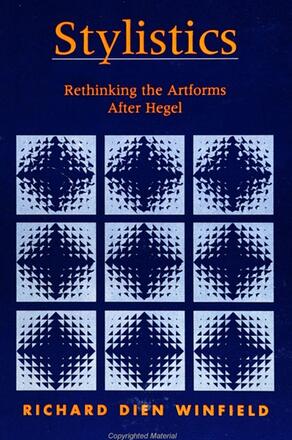
Stylistics
Rethinking the Artforms After Hegel
Alternative formats available from:
Presents a systematic theory of the artforms (symbolic, classical, and romantic), providing a way of addressing contemporary art and sketching a theory of the individual arts.
Description
Winfield develops a systematic theory of the fundamental styles of art, addressing the most neglected area of aesthetics, without which neither cultural divides, artistic periods, nor the fate of art in modernity can be understood. Stylistics thoroughly critiques Hegel's analysis of symbolic, classical, and romantic art in order to conceive the basic modes of artistic style. In so doing, the book presents an alternative to the two most prevalent approaches in aesthetics: the metaphysical mimetic theory pioneered by Plato and Aristotle and the transcendental theory of aesthetic reception pioneered by Hume and Kant and followed by most contemporary theorists. Unlike these two approaches, Stylistics pays due heed to the individuality and unity of meaning and configuration basic to artistic phenomena, making possible a rigorous differentiation of particular forms of artistic style. Because the resulting analysis of style never loses sight of the self-understanding that art provides, Stylistics provides powerful tools for reinterpreting the cultural differences of antiquity and modernity and of East and West.
Richard Dien Winfield is Professor of Philosophy at the University of Georgia. He is the author of Freedom and Modernity and Reason and Justice, both published by SUNY Press, and Systematic Aesthetics; Law in Civil Society; Overcoming Foundations: Studies in Systematic Philosophy; and The Just Economy.
Reviews
"Winfield's assessment of Hegel's views is accurate and perceptive. He retains that which is helpful, and gives rigorously logical reasons for abandoning outmoded, contingent judgments. " — The Owl of Minerva
"The major strength of Winfield's book comes from his ambition to offer a distinctive view of philosophical aesthetics as developed from Hegel's own treatment of art. He defends a position which claims to avoid transcendental aesthetics on the one hand, and what Winfield calls metaphysical aesthetics on the other. His systematic rethinking of the aesthetic is marked by genuine philosophical seriousness. He constructively contributes to reformulating the Hegelian way of thinking. This book extends the range of Winfield's work as a systematic thinker. " — William Desmond, Loyola College